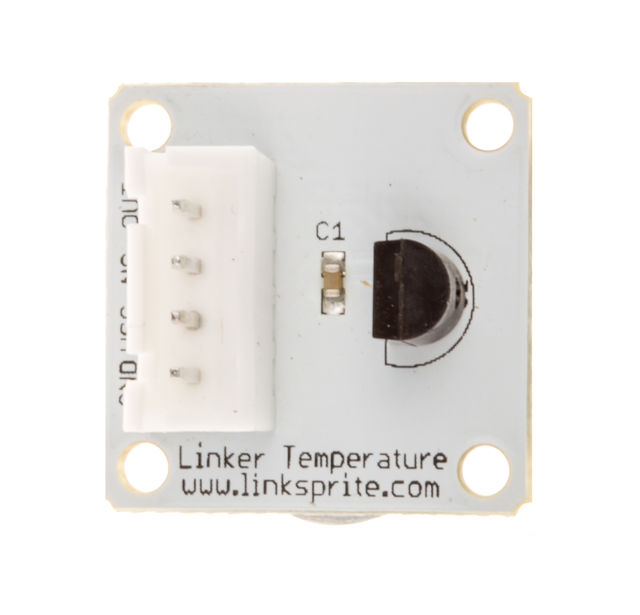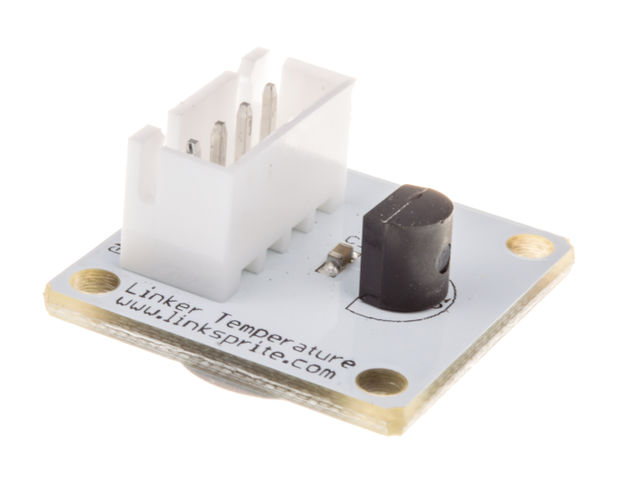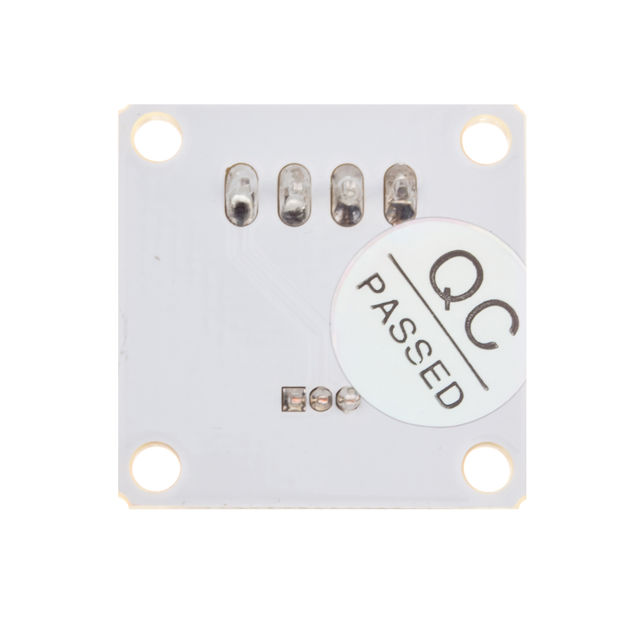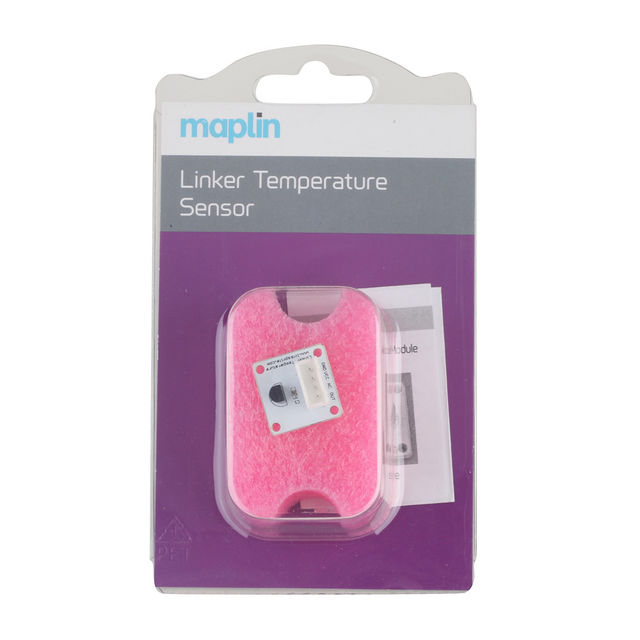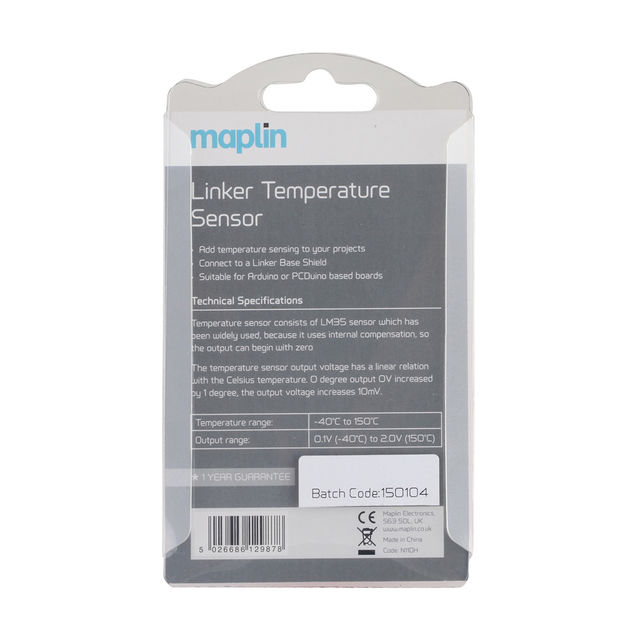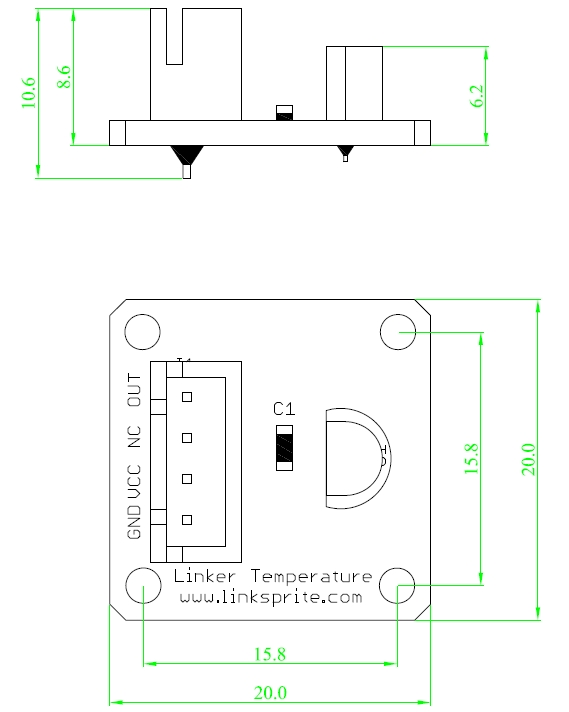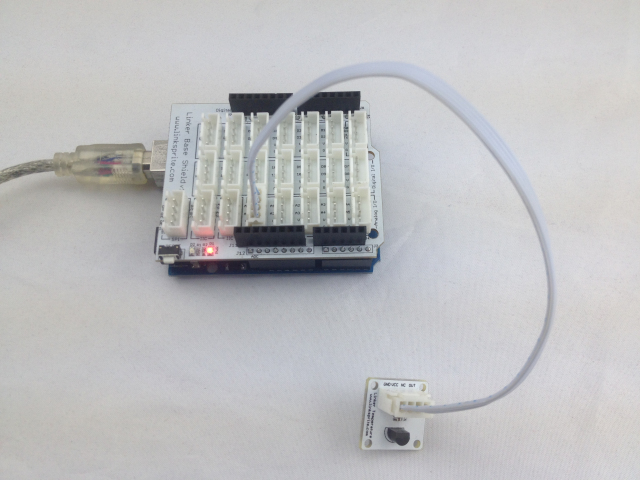Difference between revisions of "Thermal Module"
(Created page with "/* Analog input, analog output, serial output Reads an analog input pin, and T000200 Themistor Analog Sensor connected to I0, maps the result to a range from 0 to 255 an...") |
(→Introduction) |
||
| (15 intermediate revisions by 3 users not shown) | |||
| Line 1: | Line 1: | ||
| − | + | ==Introduction== | |
| − | + | The Linker Thermal Module uses a Thermistor to detect the ambient temperature. The resistance of a thermistor will increase when the ambient temperature decreases. It's this characteristic that we use to calculate the ambient temperature. | |
| + | |||
| + | [[File:Thermal 118101005 first.jpg| 640px]] | ||
| + | |||
| + | [[File:Thermal 118101005 second.jpg| 640px]] | ||
| + | |||
| + | [[File:Thermal 118101005 third.jpg| 640px]] | ||
| + | |||
| + | |||
| + | |||
| + | [[File:N11DH PACKAGED FRONT.jpg|640px]] | ||
| + | |||
| + | [[File:N11DH PACKAGED BACK.jpg|640px]] | ||
| + | |||
| + | == Features == | ||
| − | + | Dimensions: 20.0×20.0×10.6mm | |
| − | |||
| − | |||
| − | + | Net weight: 1.8g | |
| − | |||
| − | |||
| − | |||
| − | |||
| − | + | == Dimension == | |
| − | + | [[File:temperature dimension.jpg]] | |
| − | + | == Schematics == | |
| − | |||
| − | |||
| − | |||
| − | |||
| − | |||
| − | |||
| − | |||
| − | |||
| − | |||
| − | |||
| − | |||
| − | // | + | *[https://s3.amazonaws.com/linksprite/LinkerKit/Temperature.pdf Schematics ] |
| − | // | ||
| − | |||
| − | |||
| − | + | ==Application Ideas== | |
| − | |||
| − | void setup() { | + | <syntaxhighlight lang="c"> |
| − | // | + | //TMP36 Pin Variables |
| − | + | int sensorPin = 0; //the analog pin the TMP36's Vout (sense) pin is connected to | |
| + | //the resolution is 10 mV / degree centigrade with a | ||
| + | //500 mV offset to allow for negative temperatures | ||
| + | |||
| + | /* | ||
| + | * setup() - this function runs once when you turn your Arduino on | ||
| + | * We initialize the serial connection with the computer | ||
| + | */ | ||
| + | void setup() | ||
| + | { | ||
| + | Serial.begin(9600); //Start the serial connection with the computer | ||
| + | //to view the result open the serial monitor | ||
| + | } | ||
| + | |||
| + | void loop() // run over and over again | ||
| + | { | ||
| + | //getting the voltage reading from the temperature sensor | ||
| + | int reading = analogRead(sensorPin); | ||
| + | |||
| + | // converting that reading to voltage, for 3.3v arduino use 3.3 | ||
| + | float voltage = reading * 5.0; | ||
| + | voltage /= 1024.0; | ||
| + | |||
| + | // print out the voltage | ||
| + | Serial.print(voltage); Serial.println(" volts"); | ||
| + | |||
| + | // now print out the temperature | ||
| + | float temperatureC = (voltage - 0.5) * 100 ; //converting from 10 mv per degree wit 500 mV offset | ||
| + | //to degrees ((volatge - 500mV) times 100) | ||
| + | Serial.print(temperatureC); Serial.println(" degrees C"); | ||
| + | |||
| + | // now convert to Fahrenheight | ||
| + | float temperatureF = (temperatureC * 9.0 / 5.0) + 32.0; | ||
| + | Serial.print(temperatureF); Serial.println(" degrees F"); | ||
| + | |||
| + | delay(1000); //waiting a second | ||
} | } | ||
| − | |||
| − | |||
| − | |||
| − | |||
| − | |||
| − | |||
| − | |||
| − | + | </syntaxhighlight> | |
| − | |||
| − | |||
| − | |||
| − | |||
| − | + | [[File:Thermal Link.jpg]] | |
| − | + | ||
| − | + | ==How to buy== | |
| − | + | Here to buy Thermal Module on [http://store.linksprite.com/thermal-module-of-linker-kit-for-pcduino-arduino/ store] | |
| − | |||
Latest revision as of 10:54, 18 July 2016
Introduction
The Linker Thermal Module uses a Thermistor to detect the ambient temperature. The resistance of a thermistor will increase when the ambient temperature decreases. It's this characteristic that we use to calculate the ambient temperature.
Features
Dimensions: 20.0×20.0×10.6mm
Net weight: 1.8g
Dimension
Schematics
Application Ideas
<syntaxhighlight lang="c"> //TMP36 Pin Variables int sensorPin = 0; //the analog pin the TMP36's Vout (sense) pin is connected to
//the resolution is 10 mV / degree centigrade with a
//500 mV offset to allow for negative temperatures
/*
* setup() - this function runs once when you turn your Arduino on * We initialize the serial connection with the computer */
void setup() {
Serial.begin(9600); //Start the serial connection with the computer
//to view the result open the serial monitor
}
void loop() // run over and over again {
//getting the voltage reading from the temperature sensor
int reading = analogRead(sensorPin);
// converting that reading to voltage, for 3.3v arduino use 3.3
float voltage = reading * 5.0;
voltage /= 1024.0;
// print out the voltage
Serial.print(voltage); Serial.println(" volts");
// now print out the temperature
float temperatureC = (voltage - 0.5) * 100 ; //converting from 10 mv per degree wit 500 mV offset
//to degrees ((volatge - 500mV) times 100)
Serial.print(temperatureC); Serial.println(" degrees C");
// now convert to Fahrenheight
float temperatureF = (temperatureC * 9.0 / 5.0) + 32.0;
Serial.print(temperatureF); Serial.println(" degrees F");
delay(1000); //waiting a second
}
</syntaxhighlight>
How to buy
Here to buy Thermal Module on store
